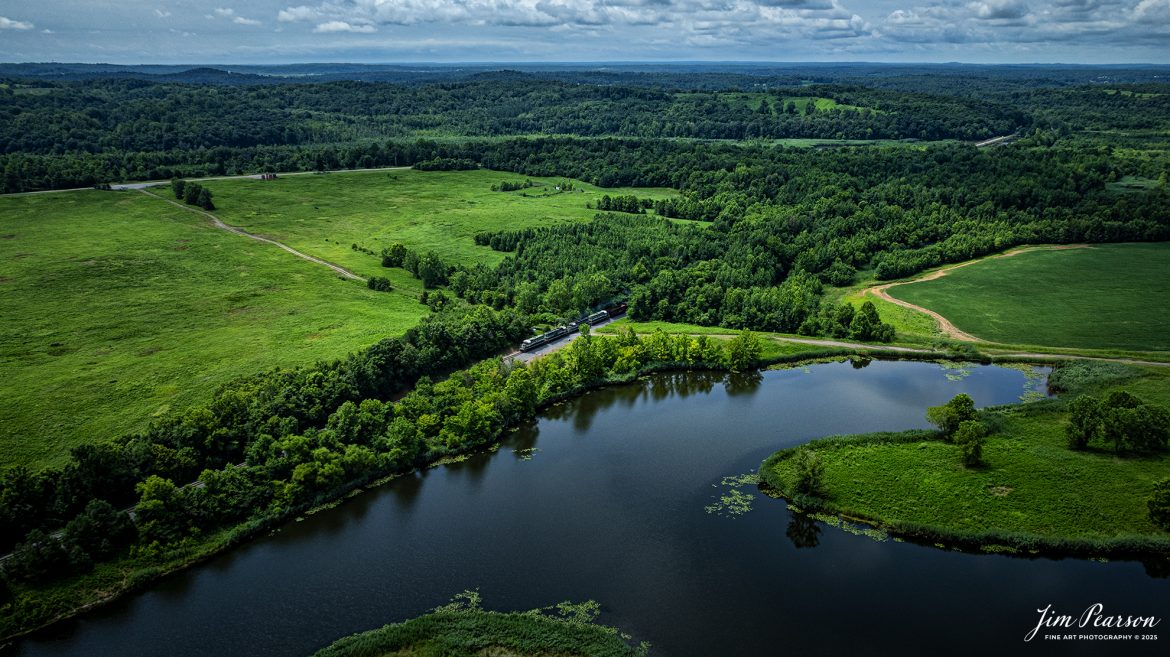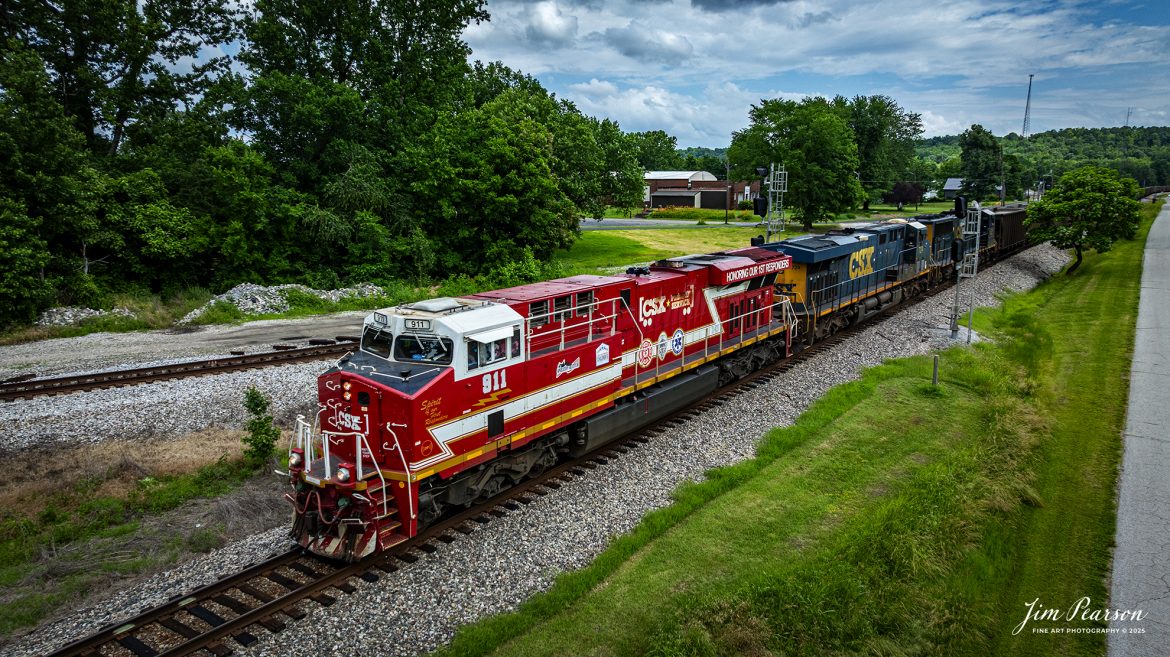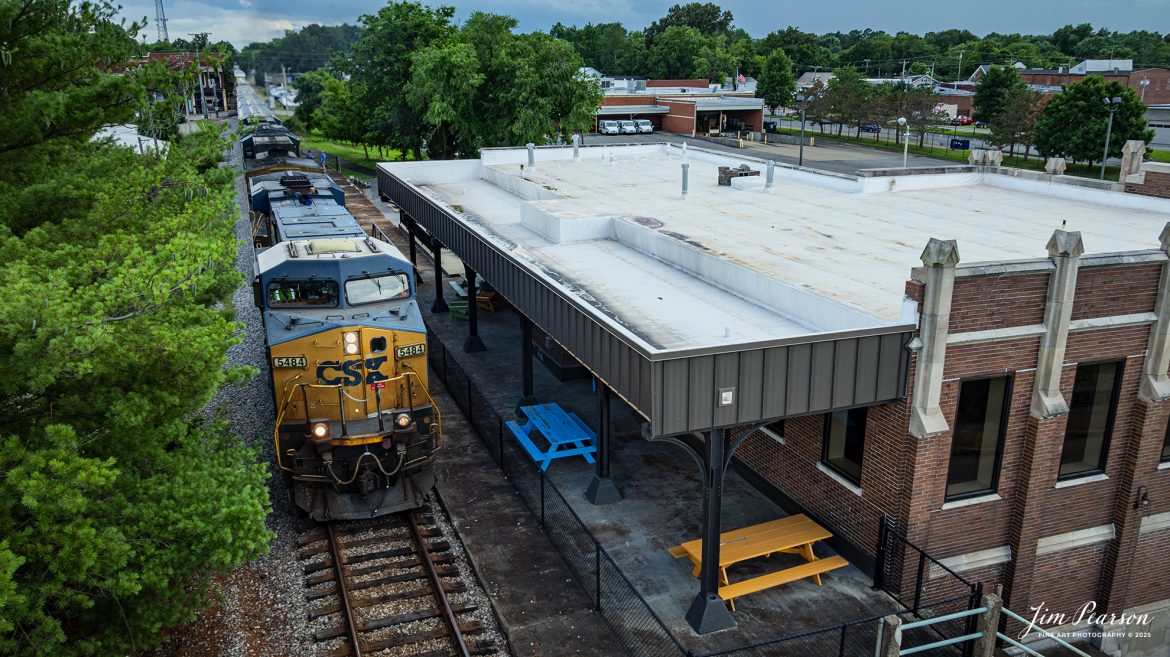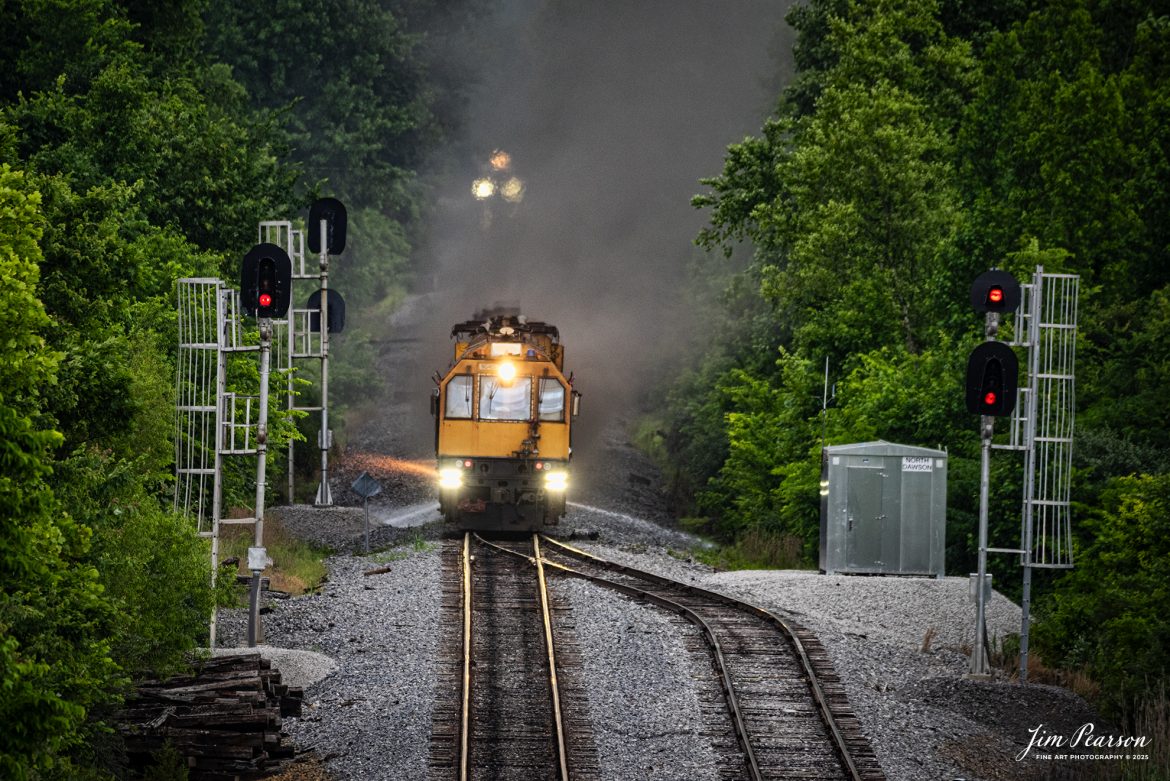The late evening light and rainy weather helped bring about this slow shutter speed shot of the conductor on G419, with the latest CSX Heritage Unit, L&N 1850 leading his loaded grain train, doing a roll-by inspection on empty coal train E904 at the south end of the siding at Slaughters, Kentucky on October 5th, 2023, on the Henderson Subdivision, trackage that used to belong to the L&N.
I’ve been trying for several days to get a good shot of this engine, as it’s been at Howell Yard in Evansville, IN for their Family Days event. I didn’t want a shot of it just sitting in a yard, so I played the long game and made two-day long trips to Indiana to get it finally on the move! I started the chase on this move at Princeton, IN this was my last shot of the day! It rained pretty much the whole day, but fortunately there was a lull here and a couple of other spots where I was able to get the drone up!
According to CSXT: CSX has introduced the sixth locomotive in its heritage series, a freshly painted unit honoring the Louisville & Nashville Railroad. Designated CSX 1850, the locomotive will be placed into service, carrying the L&N colors across the 20,000-mile CSX network.
The paint scheme was designed and applied at the CSX Locomotive Shop in Waycross, Georgia, which has produced all six units in the heritage series celebrating the lines that came together to form the modern CSX. Like the other heritage locomotives, the L&N unit combines the heritage railroad’s iconic logo and colors on the rear two-thirds of the engine with today’s CSX colors and markings on the cab end.
Chartered by the State of Kentucky in 1850, the L&N grew into a vital transportation link between the Gulf Coast and the nation’s heartland. The railroad was absorbed by the Seaboard Coast Line Railroad, which subsequently became part of the Chessie System and, ultimately, today’s CSX.
The CSX heritage series is reinforcing employee pride in the history of the railroad that continues to move the nation’s economy with safe, reliable and sustainable rail-based transportation services.
Tech Info: DJI Mavic 3 Classic Drone, RAW, 22mm, f/8, 1/10, ISO 100.



















